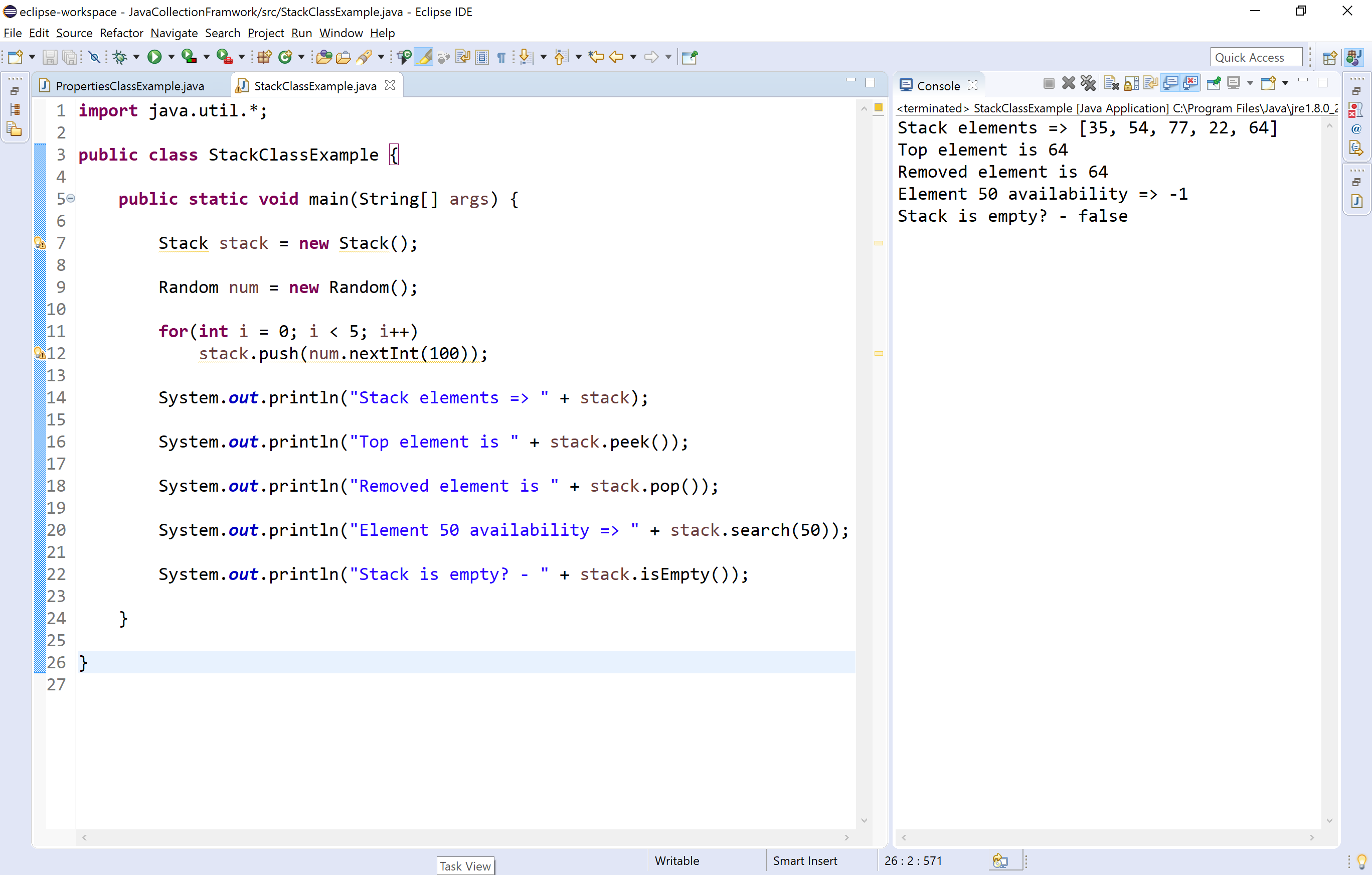

a stack is like a stack of plates on a table, the first plate put down on. If found, its offset from the top of the stack is returned. Java Stack Tutorial - A stack stores data using first-in, last-out ordering ie. Returns the element on the top of the stack, removing it in the process. The stack is a linear data structure that is used to store the collection of objects. This means that the elements pushed last are the ones that are popped first. Returns the element on the top of the stack, but does not remove it. A stack class is provided by the Java collection framework and it implements the Stack data structure. Returns true if the stack is empty, and returns false if the stack contains elements. Try (Scanner input = new Scanner(System.A stack class is provided by the Java collection framework and it implements the Stack data structure. In other words, a stack can be defined as a.

Whenever an element is added in the stack, it is added on the top of the stack, and the element can be deleted only from the stack. In Stack there is one end through which insertion and deletion takes place.

peek - Read value from the top of the stack without removing it. pop - To remove an item from the top of the stack. The element which is inserted last, is accessed first. elements can be added and removed from the stack only at the top. It is a LIFO data structure because it allows all data operations at one end only i.e. peek (): Get the top data element of the stack, without removing it. Operations in a Stack Mainly following three operations are implemented for a Stack- push - To insert an item on the stack. Java Stack tutorial A stack is an ADT Abstract Data Type or a linear data structure. pop (): Removing an element from the stack. SavingsAccount savings=new SavingsAccount() A Stack is a linear data structure that follows the principle of (Last-In-First-Out) LIFO. Stack operations push (): Pushing an element on the stack. I've been working on a savings account program that tells me "undefined for the type string" I tried declaring it as a string is there something I'm missing? The output should show like thisĮrror on this line of code import


 0 kommentar(er)
0 kommentar(er)
